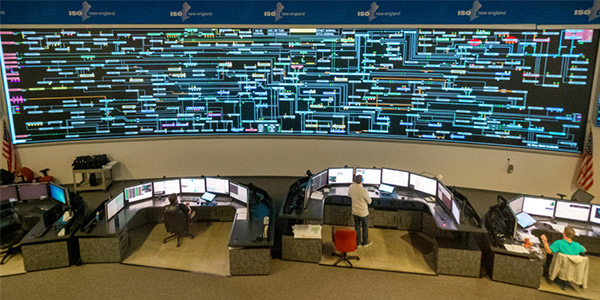FERC on Monday approved revisions to the ISO-NE tariff on recalculating the dynamic delist bid threshold (DDBT) for the Forward Capacity Auction (ER21-782).
DDBT, which was previously updated every three years, will now be calculated annually using a tariff-based “recalibration method.” Values for each auction will be updated based on recently available supply conditions and up-to-date projected demand conditions using the estimated systemwide demand curve for the FCA.
The revisions were a compromise proposal between stakeholders and the RTO, which the NEPOOL Participants Committee overwhelmingly approved in November. (See “Amended DDBT Passes,” NEPOOL Participants Committee Briefs: Nov. 5, 2020.)
The New England States Committee on Electricity (NESCOE), Calpine and Vistra’s Dynegy had offered an amendment to ISO-NE’s proposal to lower the DDBT upper bound to 75% of the net cost of new entry (CONE) and set the DDBT at the RTO’s estimated clearing price plus a margin adder calculated using 75% of net CONE.
NESCOE had concerns that the RTO’s proposal did not balance design objectives, resulting in the DDBT being too high if capacity prices increase. NESCOE said the risk of the DDBT being higher, especially as it approaches net CONE, had potential cost implications for consumers. Calpine and Dynegy said ISO-NE’s design interfered with competitive price formation, added significant administrative burden and risks to existing suppliers, and created an unnecessary barrier to market exit. The amendment allowed for a modest margin adder to low prices when supply curves are typically flat. The adder diminishes as expected prices increase, which they argued preserves some of the benefits of the DDBT.
FERC said the three components of the recalibration method “produce a value that reasonably balances the objectives of protecting against the exercise of market power and minimizing interference with competitive bidding in the FCA” when taken together. Additionally, suppliers’ incentive to exercise market power at times of capacity surplus is reduced because the demand curve flattens with decreasing prices. The commission said it was “persuaded that the minimum constraint will not undermine” the ability of the RTO’s Internal Market Monitor to “mitigate the exercise of market power.”
While the Monitor supported the filing, it did express reservations about the margin adder, asserting that it may allow resources to submit bids above their going-forward costs because offers from resources between the initial DDBT and the adder will not be subject to its review.
But because the margin adder has a sliding-scale design, the commission said the proposal “will adequately protect against the exercise of market power as it eases some administrative burden on capacity suppliers.”
“Market power is a greater concern at higher prices where the demand curve is steeper, which is where the proposed adder would be smallest, a design feature that tempers the IMM’s concerns,” FERC said.
The commission acknowledged the Monitor’s argument that the margin adder shifts the administrative burden “from resources with costs just above the DDBT to resources with costs above the DDBT plus a margin adder.”
“We note that any reasonably set DDBT creates an incentive for a set of resources to offer just below the DDBT to avoid the administrative burden of the static delist bid review process,” the commission wrote.
In the final analysis, FERC said that the proposed DDBT does not hinge on “which group of capacity suppliers this incentive applies to, but rather whether the proposal adequately mitigates the potential exercise of market power such that the resulting market prices represent just and reasonable rates for capacity. … We find that it does.”



